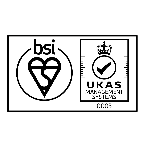
Does your lifting chain make the grade?
As advancements in the development of lifting chains run ahead of standardisation, it is important to take great care when it comes to sourcing these products, says Justin Boehm, Member Engagement Manager for Australia at the Lifting Equipment Engineers Association (LEEA).
Lifting chains tend to be more commonly used for lifting goods in Australia than in other parts of the world, certainly more so than in Europe.
These chains have developed in terms of tensile strength over the years, through Grade 20, 40, 60 and 80, which have been main stays for a long time. Development doesn’t stand still of course and we now see the availability of Grade 100 and Grade 120 chain slings for overhead lifting purposes.
Manufacturers are now developing Grade 140 and 160 for the Australian market in other industries – a real advancement in chain technology that will soon permeate into the lifting industry. These chain systems are being developed within Europe but the manufacturers are specifically targeting the Australian market, which has proven to be a key user of chain slings within its industrial base.
Australia has already recognised the value of using Grade 100 for overhead lifting with the revision of the chief standards related to Chain Slings for Lifting Purposes. The Australian Standards: ‘AS 3775.1: 2014 Chain Slings for Lifting Purposes – Part 1 – Product Specification’, and ‘AS 3775.2: 2014 Chain Slings for Lifting Purposes – Part 2 – Care & Use’ have both been extended to include Grade 100 systems as well as Grade T (80) systems and similarly the scope within AS 3776: 2015 Lifting Components for Grade T (80) has been extended to include Grade V (100).
It is often the case that standards lag behind the pace set by innovation and such is the case here because there is currently no international standard for Grade 120 and above. Many manufacturers making these higher grade chains are doing so in line with existing standards.
The grade essentially refers to the chain’s tensile strength: higher grades have a greater tensile strength, which allows a smaller diameter chain to be used to lift a similar weight.
Chain is made from a particular diameter of wire rod that is bent into shape and formed. Using higher grade material allows the diameter of the chain to be reduced, making it is less bulky and easier for an operator to use.
For example, Grade 120 chain has a 50% increase in working load limit compared to a similar size chain in Grade 80, allowing a reduced size of chain depending on the working load required.
So it would be much lighter in weight, making handling much easier physically so operatives are less prone to muscular fatigue and risk of skeletal injury.
This is a major advantage wherever you have people fixing a chain to a load that requires lifting, such as a batch of rods in a warehouse, where manual handling issues become more important in terms of damage and deterioration over time. Being able to use lighter chains is also beneficial in environments where weight is a general issue – such as offshore applications.
However, there have been many failures in chains brought about where non-conformities and sub-standard products have been procured. Many of these products are entering Australia from ‘unknown and less reputable’ sources, without correct certification but are being passed off as being ‘fit for purpose’. But because they do not actually meet a standard, they often fail when used in the field. This of course carries a significant health and safety risk in addition to financial loss and disruption of operations.
To avoid unwittingly buying a substandard chain, it is vital that customers take great care when selecting chain suppliers. Going to reputable LEEA members is certainly a simple risk mitigation option, given that members uphold the association’s ‘gold standard’ when it comes to lifting equipment and services.
Purchasing due diligence is vital protection for ensuring you are buying a product or service from the right source. This should be backed up by specifying precisely within your purchase order the product you want, the standard expected and that the product be accompanied by the correct certification.
Fortunately, many companies are adopting this approach in Australia and many of these non-conformities from unknown sources are now being avoided.
LEEA members in Australia and New Zealand can contact Justin by email: justin.boehm@leeaint.com or tel: +(61) 400 001 000.



